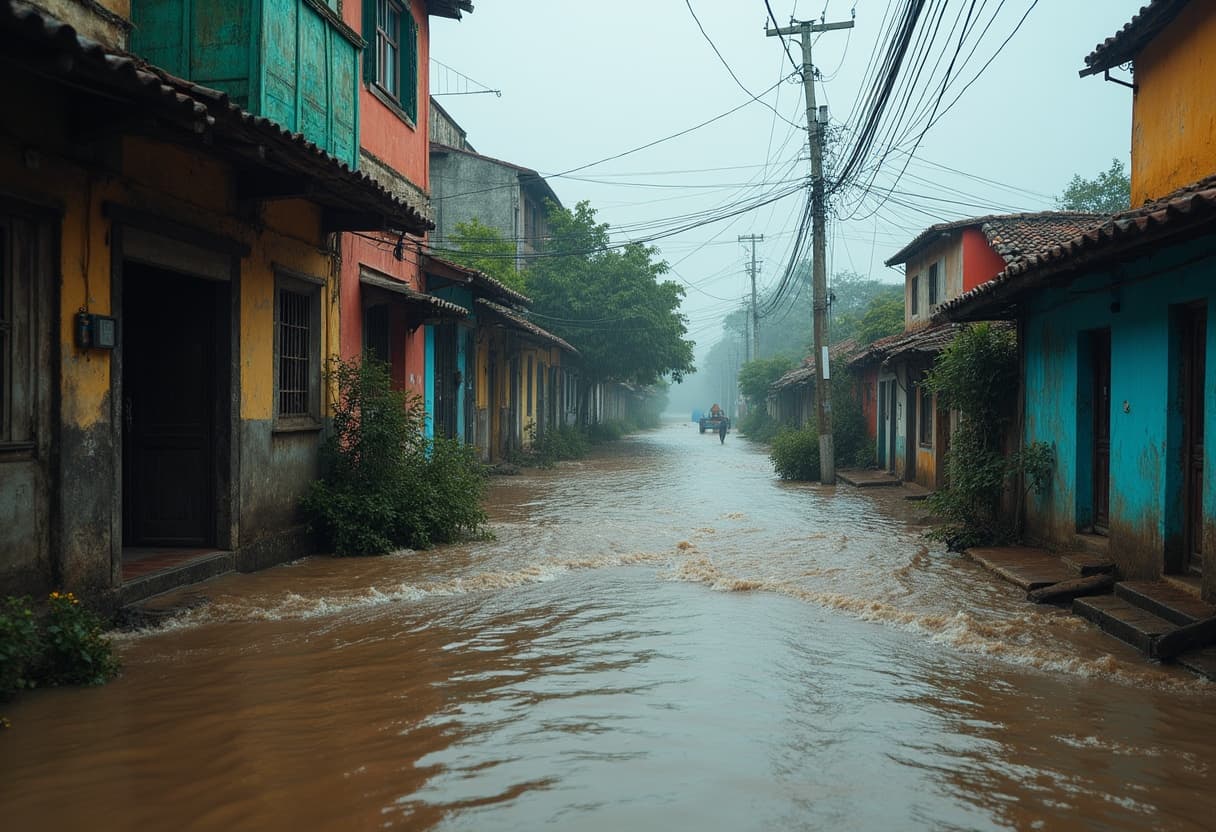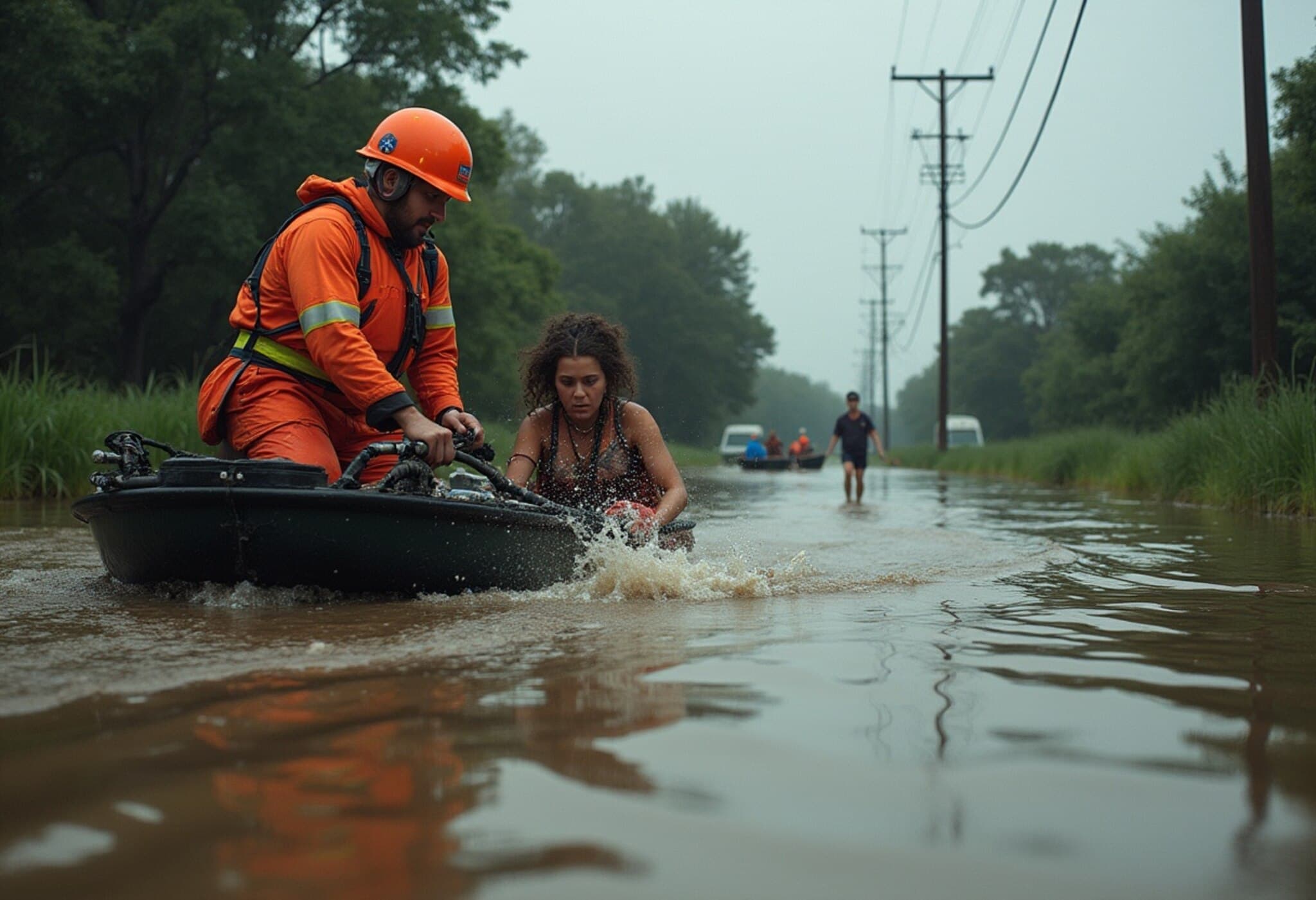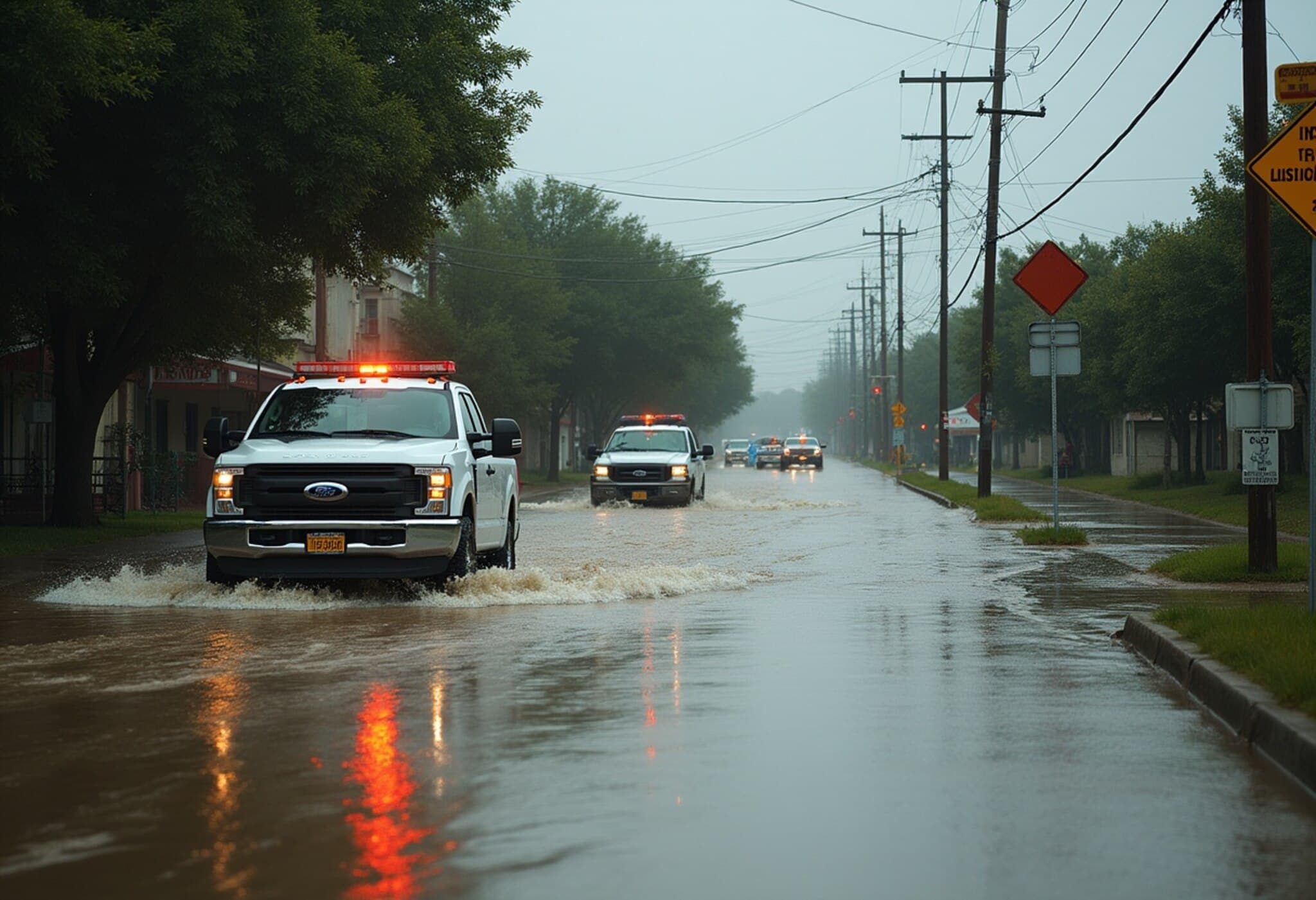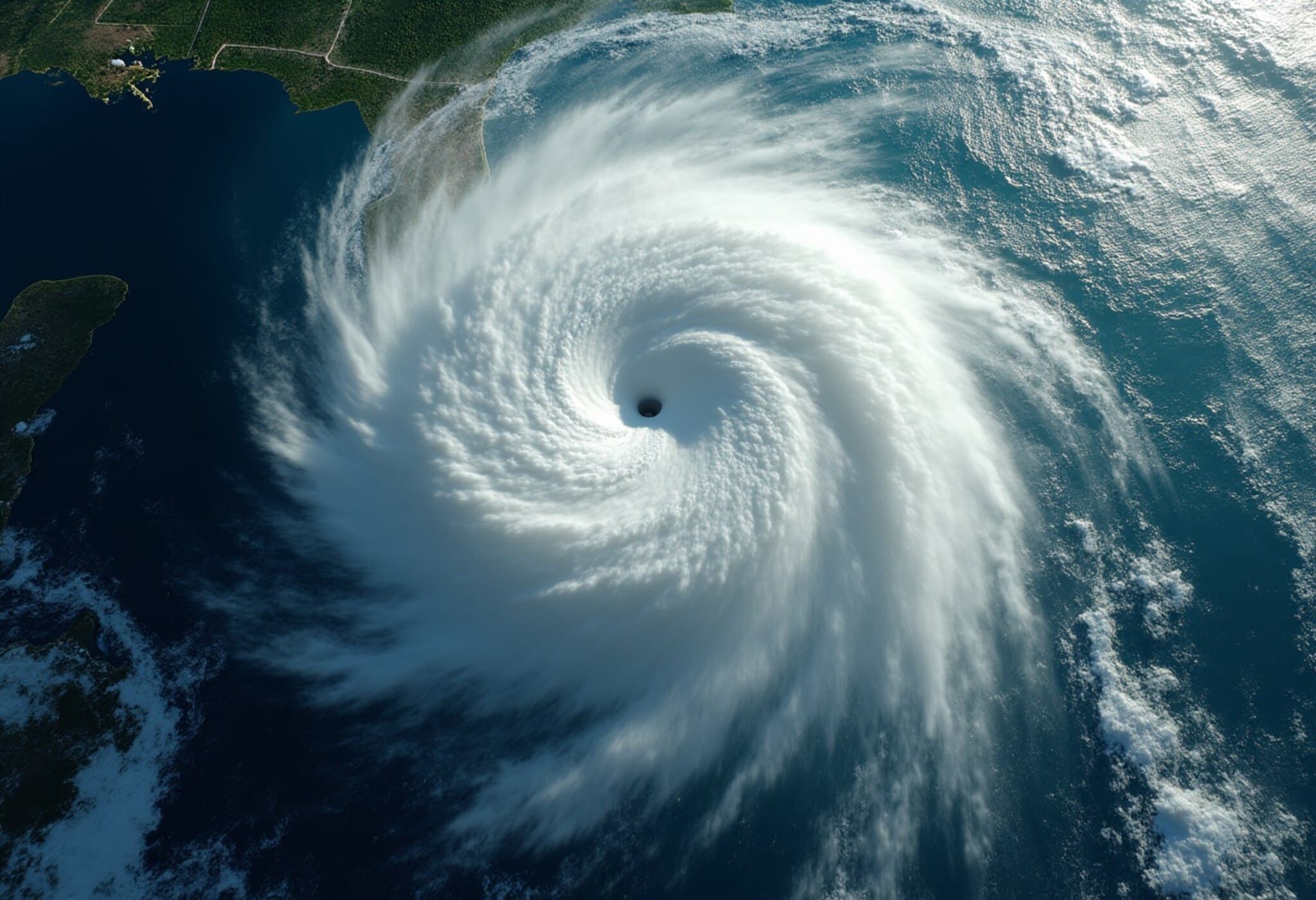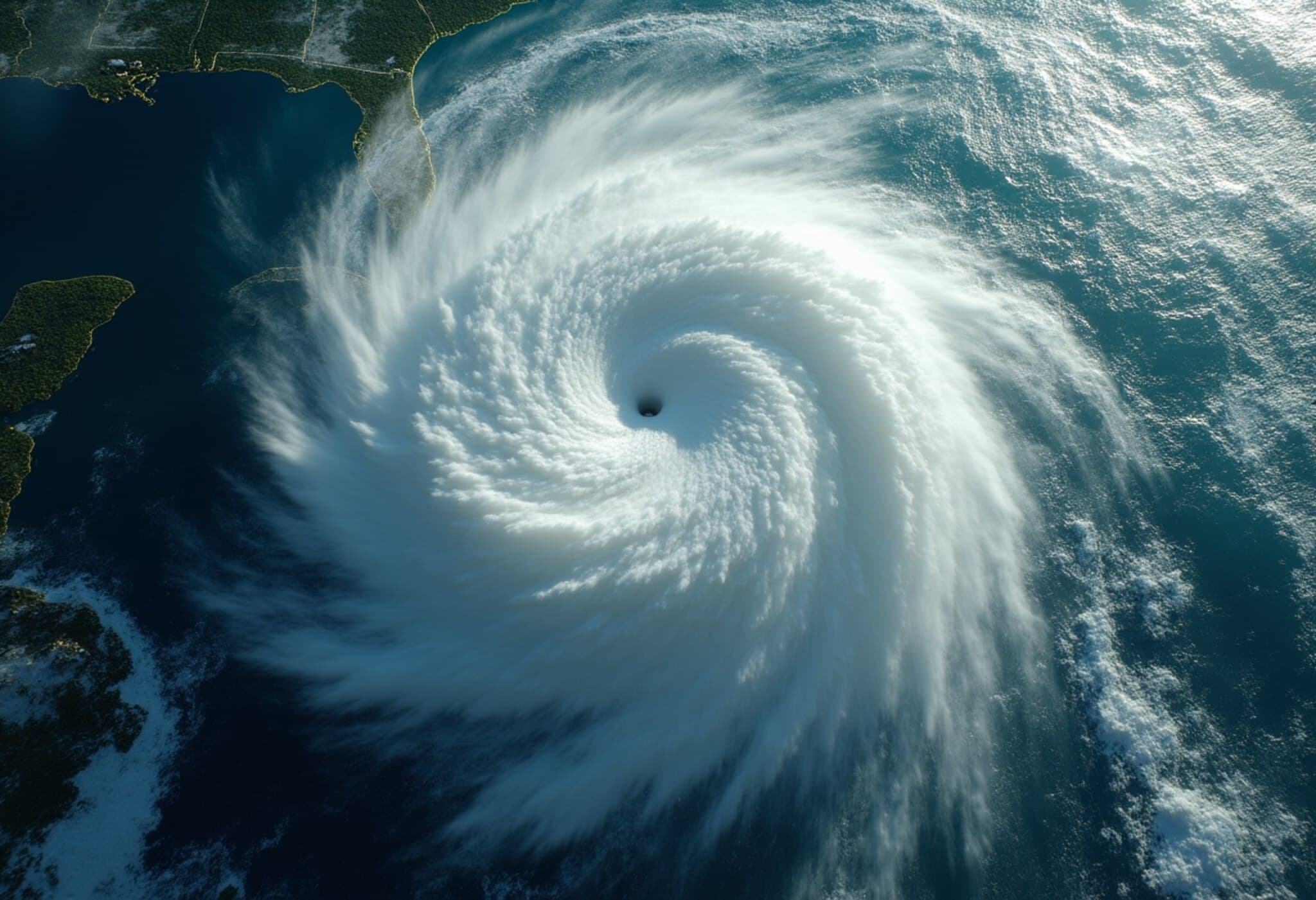Hurricane Erin Intensifies, Pounding the Caribbean and Raising Alarm in US East Coast
Hurricane Erin has escalated into a powerful Category 4 storm, unleashing fierce winds across parts of the Caribbean and prompting urgent evacuations along North Carolina's Outer Banks. As it barrels northwestward, safety officials warn of dangerous surf conditions and life-threatening rip currents along the US East Coast this week.
Erin’s Current Status and Path
The US National Hurricane Center (NHC) in Miami reported early Monday that Erin's maximum sustained winds reached an intense 130 mph (215 km/h). At approximately 2 a.m. ET, the storm was located about 110 miles northeast of Grand Turk Island and roughly 935 miles south-southeast of Cape Hatteras, North Carolina, moving northwest at 12 mph (19 km/h).
Despite no direct landfall forecasted, Erin’s vast size—characterized by hurricane-force winds extending 60 miles from its center and tropical storm-force winds reaching out 230 miles—means coastal regions can expect significant impacts for several days.
Precautionary Measures and Local Responses
Reflecting the seriousness of the threat, Dare County in North Carolina declared a state of emergency on Monday. Authorities ordered the evacuation of Hatteras Island, part of the vulnerable Outer Banks barrier islands, ahead of predicted heavy surf and sustained winds that may severely damage coastal infrastructure, including N.C. Highway 12.
Residents and travelers in the region are bracing for significant disruption, with emergency services preparing for potential flooding and erosion.
Caribbean Impact: Power Outages and Disrupted Travel
Erin’s outer bands brought torrential rains and strong winds across Puerto Rico and the Virgin Islands on Sunday, causing widespread power outages affecting approximately 147,000 customers according to Luma Energy, the island’s main power distributor. The volatile weather also resulted in the cancellation of over 20 flights, complicating travel plans for many.
Thankfully, as conditions eased, US Coast Guard authorities authorized the reopening of ports in Puerto Rico and the US Virgin Islands by Sunday evening.
Environmental Context: Climate Change’s Role in Intensifying Storms
Scientists continue to observe a troubling trend of rapid hurricane intensification in the Atlantic basin, a phenomenon linked closely to climate change. Warmer ocean surface temperatures and heightened atmospheric moisture levels provide the energy to amplify storms at unprecedented rates.
Erin exemplifies this pattern, having previously peaked at a devastating Category 5 — with winds reaching 160 mph (260 kph) over the weekend — before temporarily weakening. As Richard Pasch from the National Hurricane Center remarked, “You’re dealing with a major hurricane. The intensity is fluctuating. It’s a dangerous hurricane in any event.”
Looking Ahead: Coastal Risks and Preparedness
- Life-threatening surf and rip currents are expected to persist through midweek along the Bahamas, Bermuda, US East Coast, and even Atlantic Canada.
- Communities along the coast should remain vigilant, adhere to evacuation orders, and prepare for potential power outages and flooding.
- Transportation disruptions and port closures may continue as Erin moves northward and then veers northeast.
Expert Insight
From a policy perspective, Hurricane Erin underscores the urgent need to bolster coastal infrastructure resilience, especially in vulnerable barrier island communities like North Carolina's Outer Banks. Federal and state agencies may need to prioritize funding for adaptive measures such as elevated roadways and natural barriers to mitigate future storm damage.
Moreover, Erin’s rapid strengthening serves as a stark reminder for ongoing climate change mitigation efforts to limit warming trends that fuel supercharged storms. Policymakers face increasing pressure to integrate scientific forecasts into emergency preparedness to save lives and prevent extensive economic losses.
Editor's Note
Hurricane Erin’s evolution challenges our preparedness at multiple levels—from local evacuations to national climate policies. While the storm may not make direct landfall, its expansive reach will test coastal communities' resilience and highlight the growing influence of climate change on hurricane behavior. As Erin advances, staying informed and responsive remains key. What investments in disaster readiness are essential to safeguard America’s eastern seaboard against more frequent and intense storms? This evolving situation invites reflection on how society can better anticipate and adapt to an increasingly volatile climate future.



